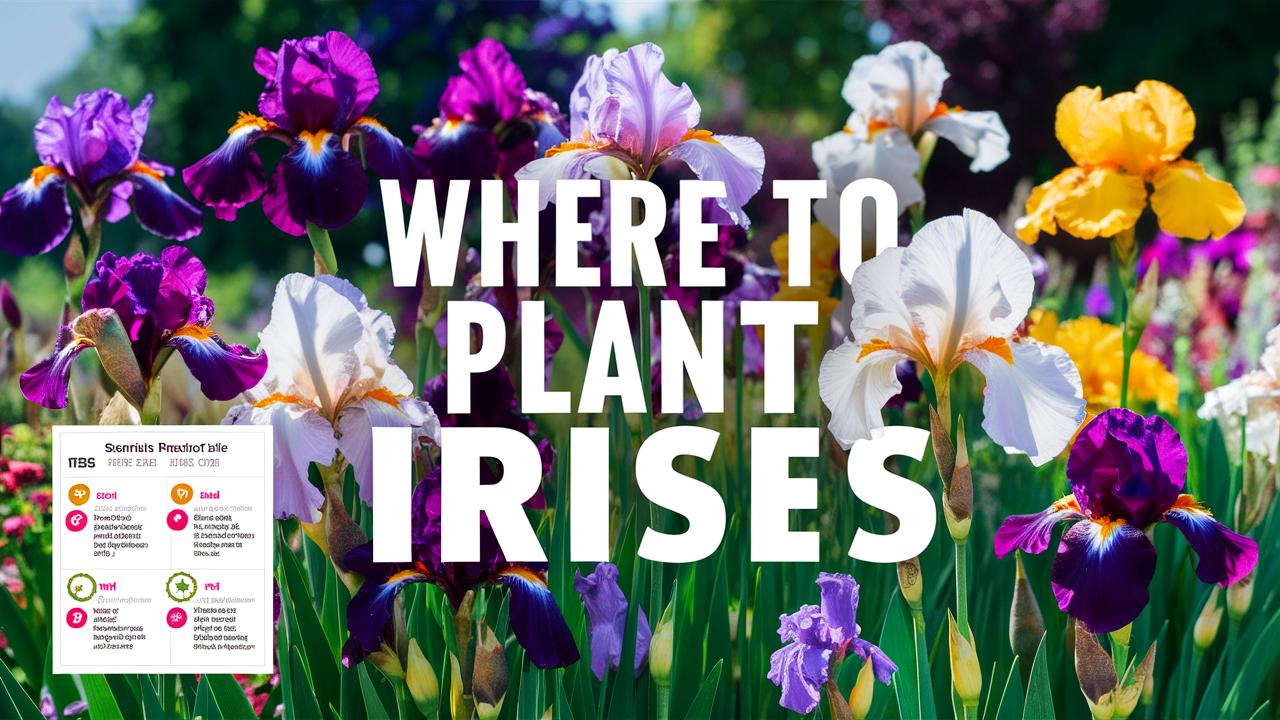In this guide, we will explore everything you need to know about where to plant irises, ensuring your garden bursts into bloom with these eye-catching flowers.
Understanding Irises: An Overview
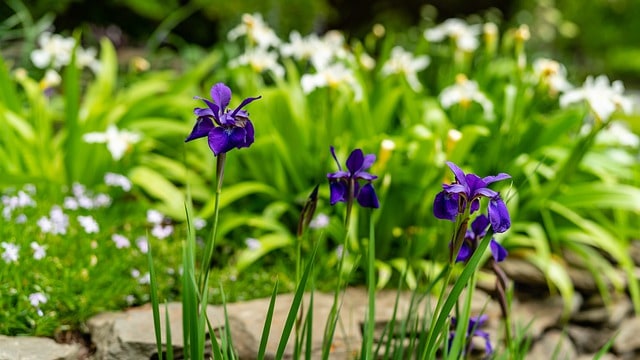
Before deciding where to plant irises, it’s helpful to understand the different types of irises and their specific needs. The Iris genus spans over 300 species and includes a variety of forms such as the bearded iris, Siberian iris, and Japanese iris, each with its unique characteristics and planting requirements.
Types of Irises
Bearded Irises: Perhaps the most recognizable, bearded irises thrive in well-draining soil and require full sun for optimal growth. Their flamboyant flowers typically bloom in late spring to early summer and add a majestic presence to any garden.
Siberian Irises: These irises are known for their adaptability and resilience. They can tolerate wet soil conditions and prefer partial shade to full sun, making them suitable for borders and near water features.
Japanese Irises: Featuring broad, elegant petals, Japanese irises flourish in moist environments. They are often grown in boggy areas or along the edges of ponds, where their roots can absorb water.
Pacific Coast Irises: Native to the western United States, these irises are adaptable and grow well in various soil types. They prefer full sun but can tolerate some shade, making them suitable for diverse garden environments.
With a broad knowledge of the types of irises, we can now focus on where to plant them effectively.
Choosing the Right Location
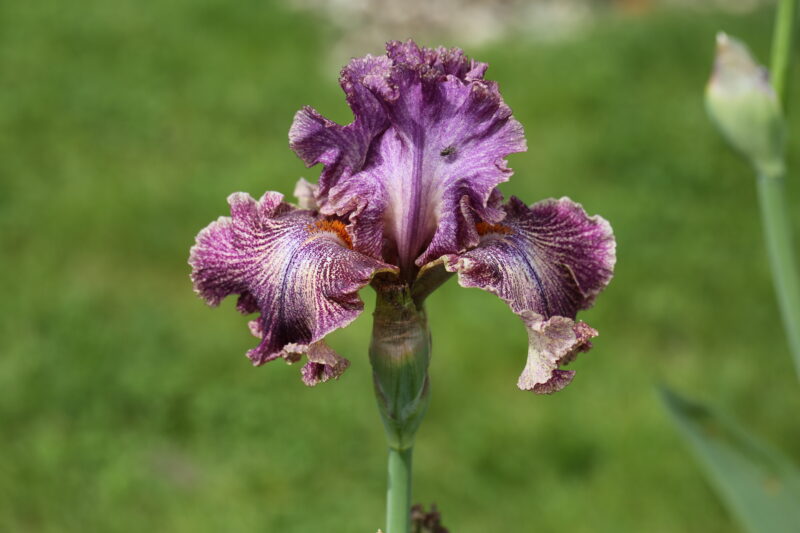
Selecting the perfect location for planting irises is crucial for their success. Here are several key factors to consider:
Sunlight
Irises thrive on sunlight; therefore, choosing a spot in your garden that receives at least six hours of direct sunlight daily is advisable. However, the specific type of iris you select may have different preferences:
Full Sun: Bearded and Pacific Coast irises flourish in full sun, ensuring they receive enough energy for robust blooming.
Partial Shade: Siberian and Japanese irises do well in partial shade, especially in areas with hotter climates where afternoon sun can be intense.
Evaluating sunlight patterns in your garden throughout the day will help ensure you provide the right conditions for your irises.
Soil Conditions
Soil plays a vital role in the health and growth of irises. Here are important considerations regarding soil:
Drainage
Proper drainage is imperative. Most irises prefer well-draining soil to avoid the risk of rot. If your planting site has heavy clay or poorly draining soil, consider amending it with organic matter such as compost or peat moss to improve its structure and drainage capabilities.
pH Level
The pH level of your soil should ideally be between 6.0 and 7.0 for optimal iris growth. A simple soil test will help you determine the current pH level and whether you need to adjust it using lime (to raise pH) or sulfur (to lower pH).
Moisture Requirements
While irises typically enjoy moist conditions, excessive water can lead to root rot. Consider the following guidelines:
Well-Draining Spots: Bearded irises need well-drained locations. If you’re planting them in areas that have high water retention, create raised beds or hillocks to promote drainage.
Water-Tolerant Locations: Siberian and Japanese irises are more forgiving of wetter conditions. Plant these varieties in garden beds that do not dry out quickly, such as along the edge of a water feature or in low-lying areas of your garden.
Design Considerations

Selecting the right location for irises also involves thoughtful garden design. Consider the aesthetics and functionality of your garden layout:
Color Schemes
Irises come in a wide range of colors, including purples, blues, whites, and yellows. When designing your garden space, think about how the colors of your irises will complement other plants and features. Grouping identical colors creates a bold statement, while mixing different colors provides a vibrant tapestry.
Height and Layering
Different iris types vary in height, so consider how they will fit into your garden’s visual hierarchy. Taller varieties, like bearded irises, can serve as a backdrop for shorter plants. Mixing irises with other perennials and shrubs can create a dynamic, tiered effect, adding dimension to your landscape.
Focal Points
Planting irises in a dedicated flower bed or around a focal point, such as a statue or water feature, can enhance the visual impact. The striking blooms can draw the eye and create a serene atmosphere within your garden.
Seasonal Planning and Timing
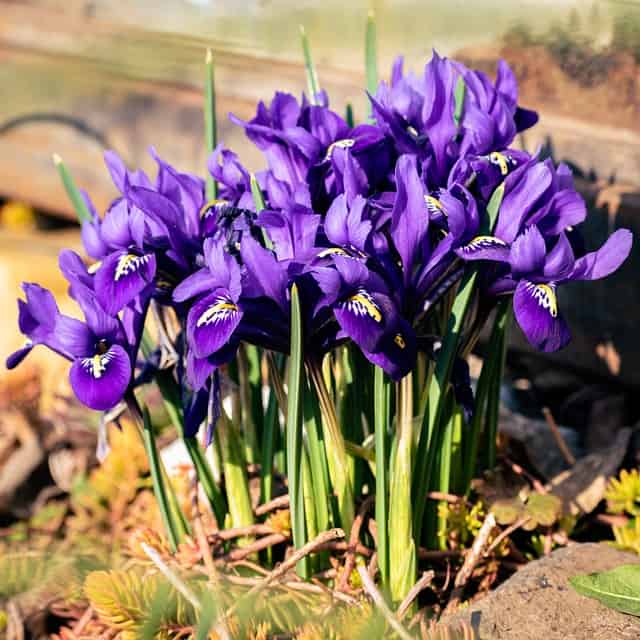
When you decide where to plant irises, the timing of planting is equally important. The optimal time for planting irises varies based on their type and your local climate:
Spring Planting
Irises are typically planted in early spring when the soil is thawed and workable. This allows for the establishment of roots before the summer heat.
Fall Planting
In regions with mild winters, fall planting can be beneficial. Planting irises in late summer or early fall allows them to develop strong root systems before the dormancy of winter, giving them a head start for spring growth.
Companion Plants for Irises
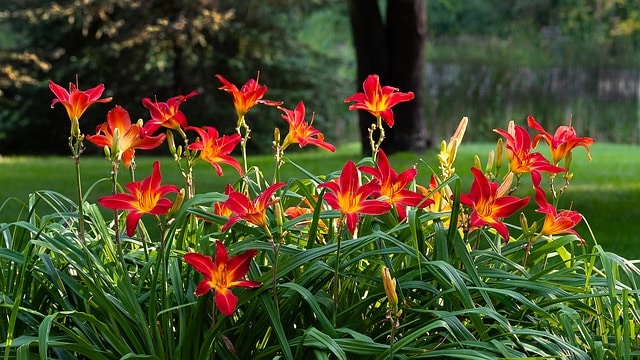
When considering where to plant irises, think about potential companion plants that will enhance your garden design. Many plants work harmoniously alongside irises and boost the overall aesthetics of the garden space. Here are a few great companions:
Daylilies
Daylilies are excellent companions for irises, as they have similar sunlight and soil requirements. Their vibrant blooms can extend the flowering season, providing beauty alongside the irises.
Catmint
Catmint has a beautiful blue hue and produces fragrant foliage that attracts pollinators, pairing nicely with the delicate irises. Its drought-tolerant nature complements the water needs of various iris species.
Ornamental Grasses
Incorporating ornamental grasses into your iris garden can add texture and movement. Grasses create a soft backdrop, enhancing the vertical presence of the irises while providing a natural, flowing aesthetic.
Creating the Ideal Bed for Irises
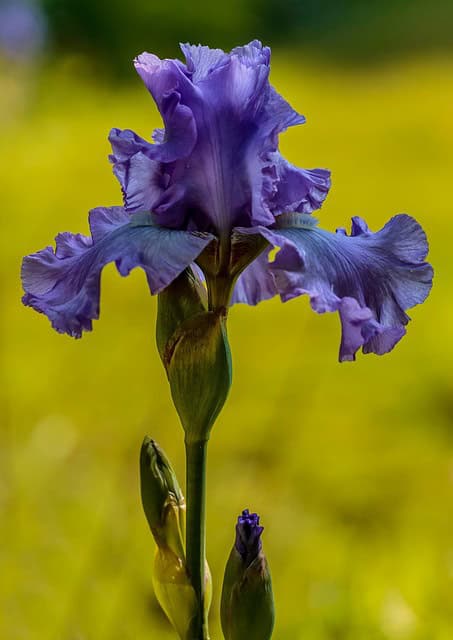
To maximize the potential of your irises, consider building a dedicated flower bed with the following steps:
Selecting the Right Area
Identify a location that aligns with the previously discussed factors: sunlight, drainage, soil quality, and design considerations.
Bed Preparation
Clear the Area: Remove all weeds, rocks, and debris from the selected area. This step ensures that competition for nutrients and water will be minimized.
Soil Preparation: Loosen the soil to a depth of 12-18 inches and incorporate plenty of organic matter to enhance drainage and fertility.
Forming Raised Beds: If your native soil retains too much moisture, consider constructing raised beds, which can provide the necessary drainage to keep the roots dry.
Planting Your Irises
When ready to plant:
Spacing: Follow the recommended spacing of 12-24 inches apart for bearded irises. For Siberian and Japanese irises, a spacing of around 18 inches is recommended. Proper spacing allows air circulation, reducing the risk of disease.
Depth: Plant irises so that their rhizomes are just below the soil surface. Covering them too deeply may inhibit flowering.
Watering: Once planted, water the irises deeply to help establish their roots. Apply a layer of mulch to retain moisture and suppress weeds without smothering the plants.
Maintaining and Caring for Your Iris Garden
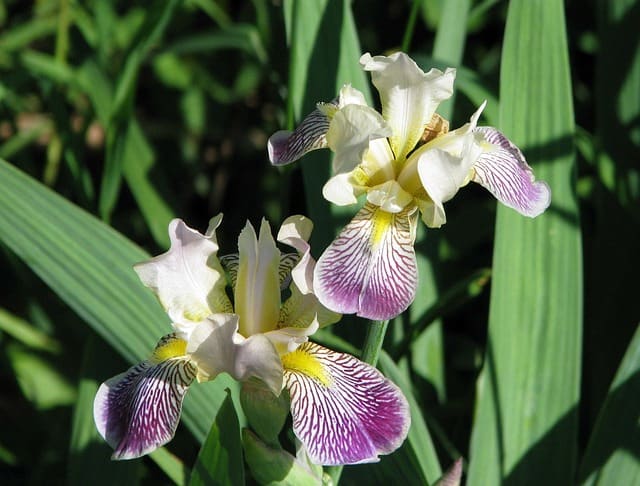
Once your irises are planted, ongoing care is crucial to their success. Here are essential tips for keeping your iris garden thriving:
Watering
New Plantings: Water regularly until established.
Established Plants: Irises generally need minimal supplemental watering, except during extremely dry spells.
Fertilizing
Use a low-nitrogen fertilizer at the beginning of the growing season to encourage strong blooms without promoting excessive leaf growth.
Pruning
After flowering, deadhead spent blooms to prevent the plant from directing energy into seed production. Once the foliage begins to yellow in late summer, cut the leaves back to about six inches to prepare your irises for dormancy.
Pest and Disease Management
Be vigilant for common pests such as aphids and iris borers. Use insecticidal soap for aphids and physically remove any visible pests. To prevent disease, avoid overhead watering to minimize moisture on the leaves.
Conclusion: Designing Your Dream Iris Garden
In conclusion, the key to successfully planting irises lies in thoughtful planning and preparation. By carefully considering factors such as sunlight, soil conditions, moisture requirements, and companion plants, you can create a stunning iris garden that not only showcases these beautiful flowers but also enhances the overall charm of your landscape.


